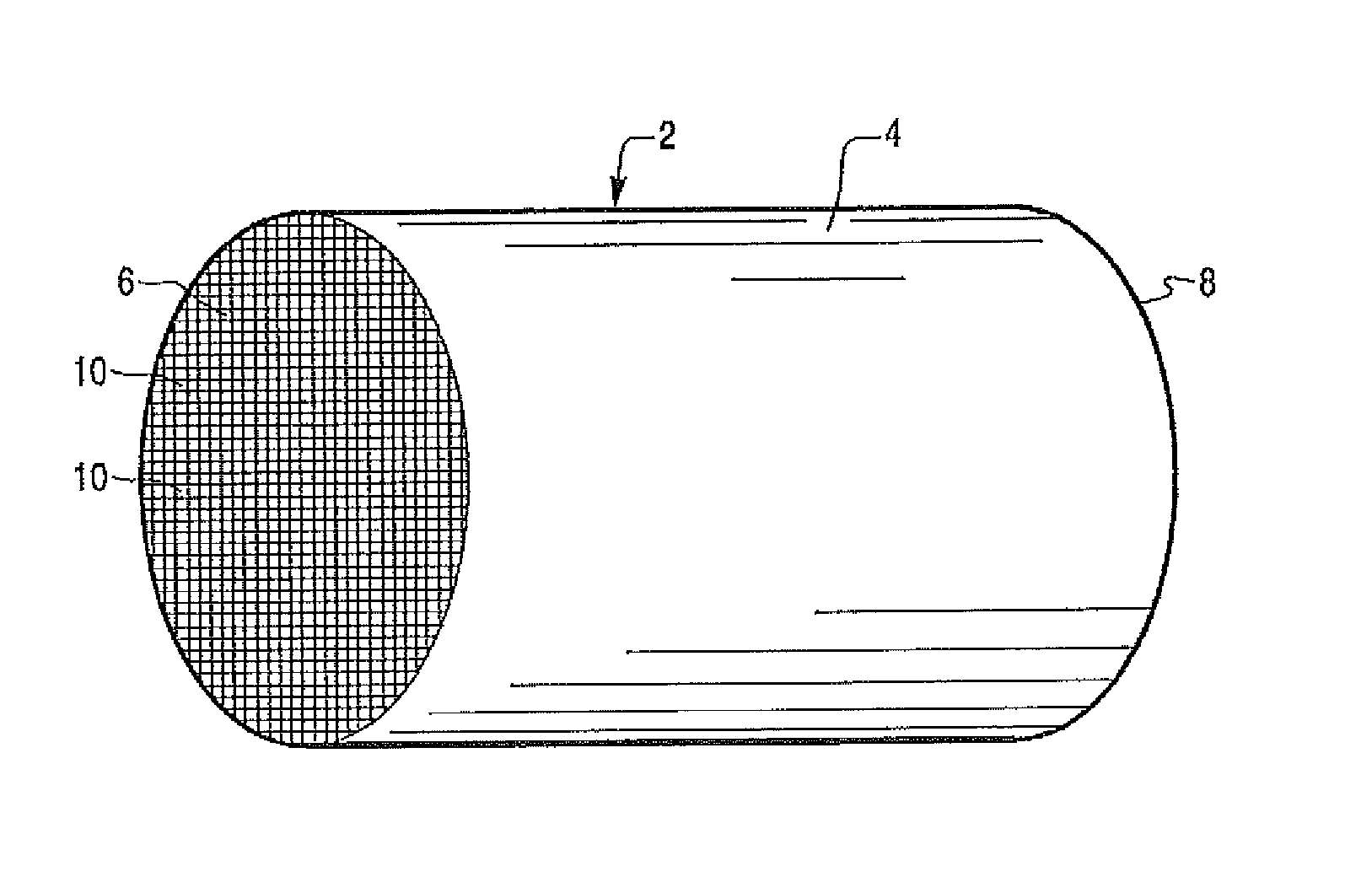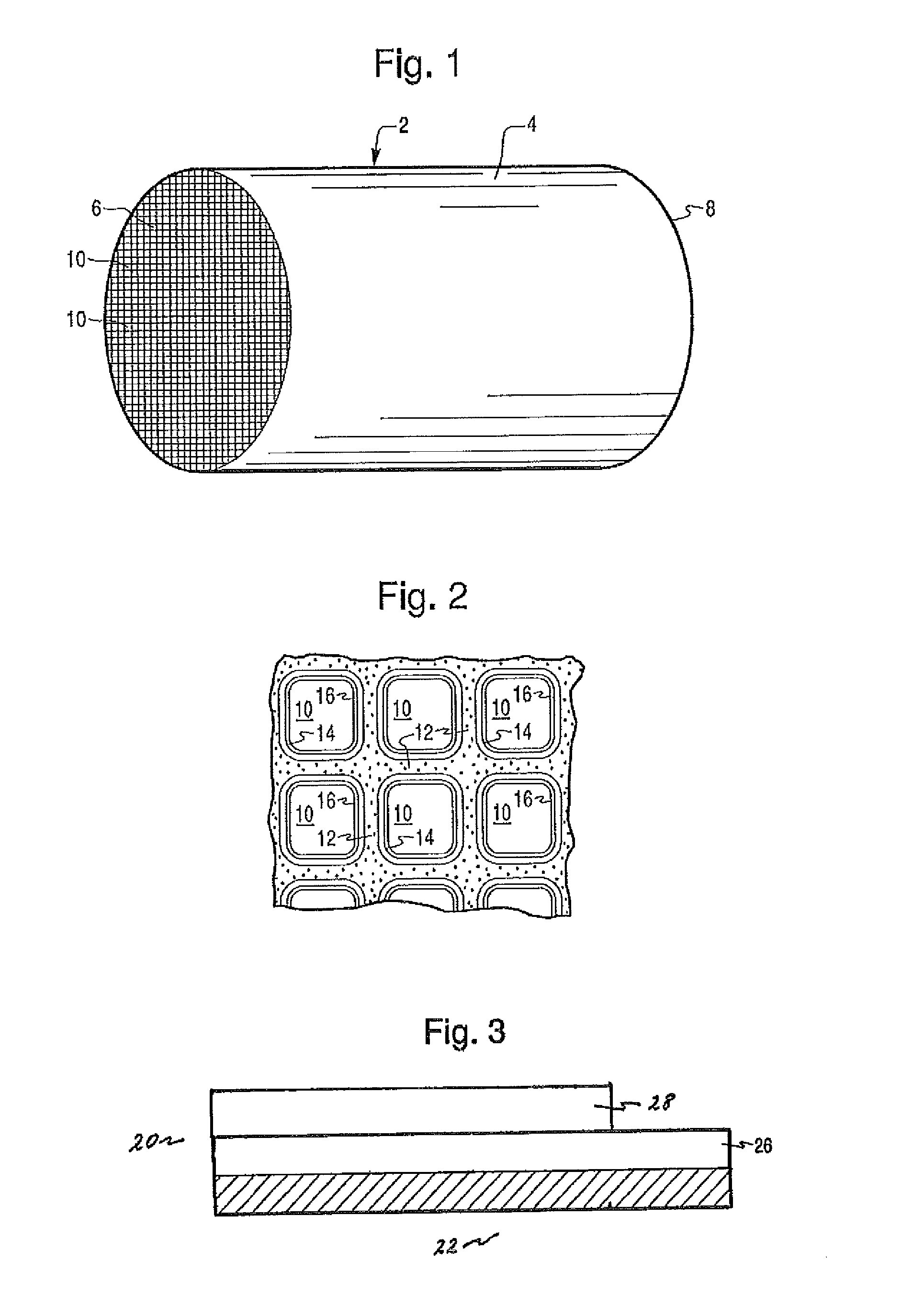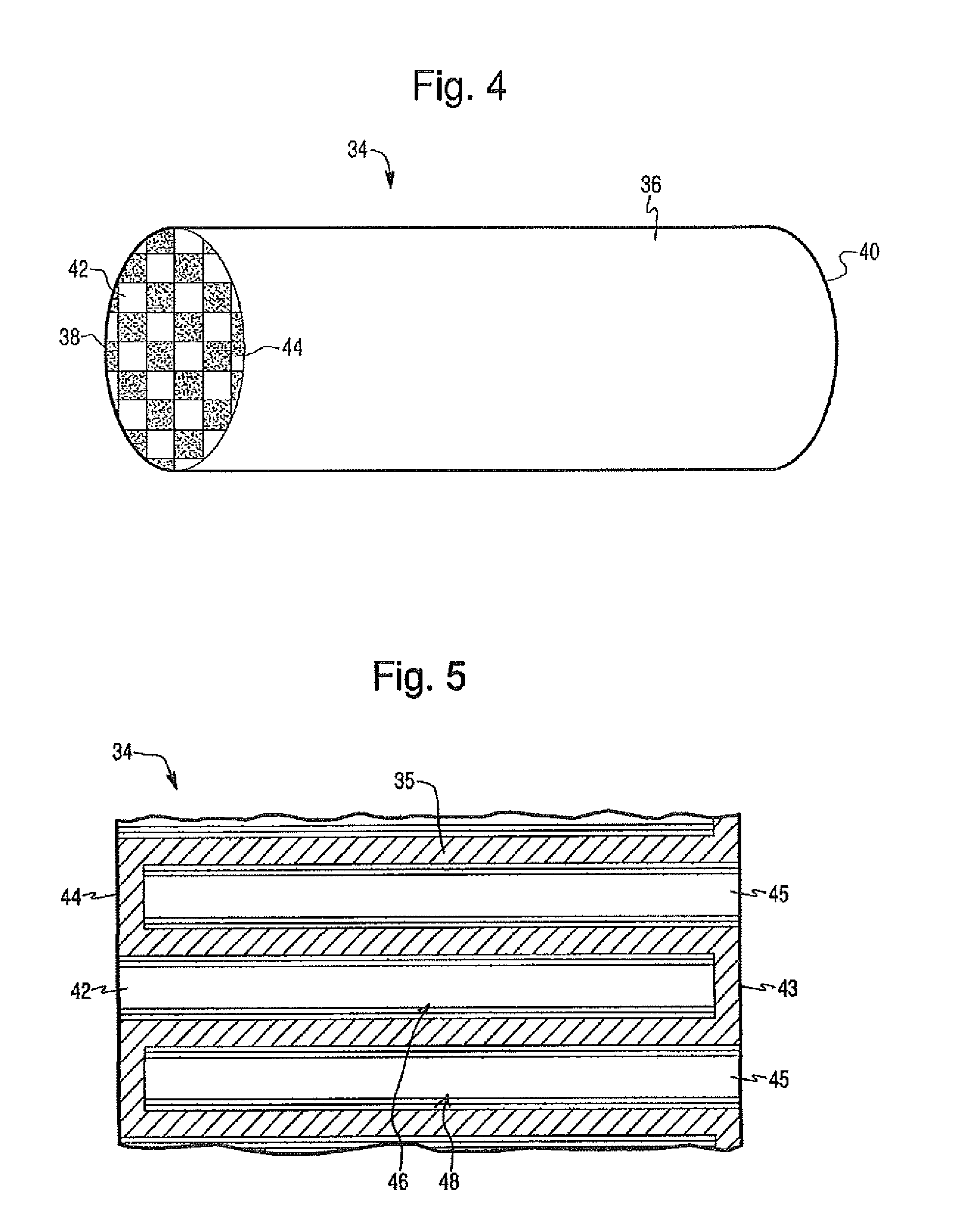NOx adsorber catalyst with superior low temperature performance
a technology of nox and nox, which is applied in the direction of metal/metal-oxide/metal-hydroxide catalysts, arsenic compounds, machines/engines, etc., can solve the problems of difficult practical application of nox catalysts, inefficient conversion of nox under lean-burn conditions, and rapid loss of catalytic activity of lean-nox catalysts
- Summary
- Abstract
- Description
- Claims
- Application Information
AI Technical Summary
Benefits of technology
Problems solved by technology
Method used
Image
Examples
##ventive example 1
Inventive Example 1
[0058]The following example illustrates one aspect of the present invention. This example exemplifies a two-layer coating formulation bearing the same total precious metal loading and base metal loading as the comparative example. This two-layer formulation comprises an undercoat layer and a top washcoat layer, were coated onto a substrate carrier, the top washcoat layer being coated over the entire undercoat washcoat layer.
Preparation of Undercoat Washcoat Layer
[0059](a) 96 grams active gamma alumina powder was impregnated with amine solution of platinum hydroxide (containing 1.565 grams Pt).
[0060](b) The alumina containing platinum obtained in step (a), 61.7 grams barium hydroxide octahydrate, 21 grams ceria powder obtained from a commercial source, 10 grams zirconyl acetate (containing 3 grams ZrO2), 23 grams glacial acetic acid, and 70 grams DI water were well mixed to form a homogeneous slurry. The particles in the slurry were diminished to 90% having a parti...
##ventive example 2
Inventive Example 2
[0069]This example exemplifies a two-layer coating formulation useful for the treatment of exhaust gases, in accordance with one embodiment of the present invention. This two-layer formulation comprises an undercoat layer and a top washcoat layer, which were coated onto a substrate carrier, the top washcoat layer being coated over the undercoat washcoat layer. The undercoat washcoat layer contained 0.6 g / in3 (15 g / ft3) of platinum and 0.6 g / in3 (2 g / ft3) of palladium impregnated a support composition comprising 0.25 g / in3 BaO, 0.05 g / in3 ZrO2, 0.10 g / in3 Ceria and 0.10 g / in3 Sr. The total washcoat composition of the top washcoat layer comprises about 1.7 g / in3. The coated carrier was then calcined at 530° C. for 2 hours.
[0070]The top washcoat layer was applied to the surface of the undercoat layer. The top washcoat layer comprises 1.2 g / in3 (70 g / ft3) Pt / SBA150, 0.8 g / in3 (8 g / ft3) and 0.6 g / in3 Rh / HAS-5. The resultant carrier was then calcined at 430° C. for 2 ho...
PUM
| Property | Measurement | Unit |
|---|---|---|
| temperature | aaaaa | aaaaa |
| temperatures | aaaaa | aaaaa |
| light-off temperature | aaaaa | aaaaa |
Abstract
Description
Claims
Application Information
 Login to View More
Login to View More - R&D
- Intellectual Property
- Life Sciences
- Materials
- Tech Scout
- Unparalleled Data Quality
- Higher Quality Content
- 60% Fewer Hallucinations
Browse by: Latest US Patents, China's latest patents, Technical Efficacy Thesaurus, Application Domain, Technology Topic, Popular Technical Reports.
© 2025 PatSnap. All rights reserved.Legal|Privacy policy|Modern Slavery Act Transparency Statement|Sitemap|About US| Contact US: help@patsnap.com



